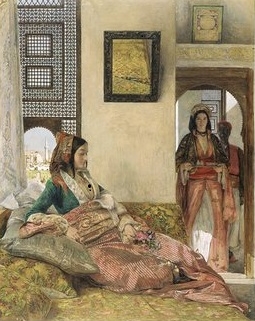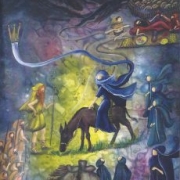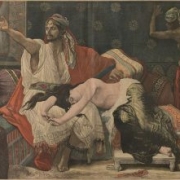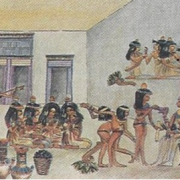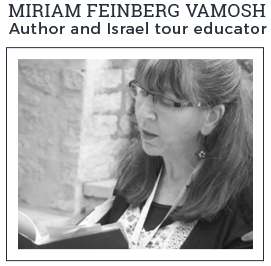King David’s Mother: She Stands for Us
King David’s Mother: She Stands for Us
Shavuot (Pentecost), among its many aspects, is the traditional death date of King David. This is an opportunity to return to my theme “Of King David’s Women,” and this time, I want to tell you about David’s mother. She’s mentioned twice in the Bible, but like most of its female characters, she has no name. And so the sages filled in the blanks in riotous color. They said her name was Nitzevet, which means “standing woman.”

Life in the Hareem. John Lewis (1858). Wikimedia Commons.
In Psalm 69:8, David wrote: “I am a foreigner to my own family, a stranger to my own mother’s children.” Why, the sages asked. They found the answer in the convoluted path David’s family took on its way to establishing the best known dynasty in Judeo-Christian tradition.
David was the great-grandson of the Moabite Ruth, whose story we read on Shavuot and who famously joined her fate to the Israelites. But Jesse, after years of marriage to the Israelite Nitzevet, the mother of his seven sons, suddenly realized that as a prominent public figure, his part-Moabite status was an impediment.
Jewish tradition accords Ruth high honors but the law in Deut. 23:3 explicitly forbade intermarriage with Moabites. So, the sages said, Jesse felt compelled to cast Nitzevet out. This was for Nitzevet’s own good, they said – Jesse didn’t want to impugn Nitzevet’s status as the wife of a despised Moabite.
The separation lasted for three years. Jesse became lonely and wanted more children. And so he took a Canaanite slave woman, who could provide him with a child of unquestionable lineage. This was possible, it was said, because if Jesse were to emancipate the slave, their children could be recognized as full-fledged members of the tribe.
Compassion Births a Plan
What an awkward, painful situation. Nitzevet and the slave woman, living alongside each other, meeting every day at the loom, the grinding stone or over the cooking fire, neither of them with any real way out. And then, out of compassion, the slave woman came up with a plan, using one of the few tools biblical women had: subterfuge. She would switch places with Nitzevet on Jesse’s sleeping pallet that night. This apparently worked well enough, because Nitzevet became pregnant.
But from the moment her pregnancy began to show, Nitzevet’s own sons, ignorant of the bedroom switch, shunned and shamed her as an adulteress. The conscience-panged Jesse forbade his sons to harm her or the child, and eventually Nitzevet gave birth – to David. Jesse recognized the child as his own, although, like some biblical Cinderella, David was relegated to shepherd status, distanced from the family, a “stranger,” “hated without reason” (Psalm 69:4). Only twenty-eight years later – when Samuel the prophet anointed David king of Israel “in the midst of his brothers” (1 Samuel 16:12–13) – was the dignity of both mother and son restored. According to one source, it was at this point that Nitzevet uttered the words ascribed to David in Psalm 118: “The stone that the builders rejected….”

Anointing of David, Veronese, 16th century. Wikimedia Commons.
What’s the Moral?
Some people in their anguish distance themselves from God, and some come closer. David, it was said, was among the latter. Women commentators have put a new gloss on the moral. They say Nitzevet is the one to be admired for bearing her pain with dignity and faith and for passing on her strength to her son David. What’s more, the story of “Standing Woman” doesn’t end in the Bible or its interpretations over the ages. It’s timeless and universal. Nitzevet stands for us. We can change the ending.

Further reading:
Chana Weisberg, “Nitzevet, Mother of David: the Bold Voice of Silence. https://www.chabad.org/theJewishWoman/article_cdo/aid/280331/jewish/Nitzevet-Mother-of-David.htm#comments
The legend of Nitzevet is based, among other sources, on the following sources:
Babylonian Talmud Baba Batra 91a.
Eliyahu KiTov. Sefer HaTodaah, 1958 (Hebrew on line http://sifrei.blogspot.co.il/2014/03/blog-post_9.html, p. 302–303, the section on Sivan and Shavuot tells about Nitzevet). English translation, Feldheim, 1998.
Yalkut HaMachiri http://hebrewbooks.org/pdfpager.aspx?req=32637&st=&pgnum=205 (Hebrew).

